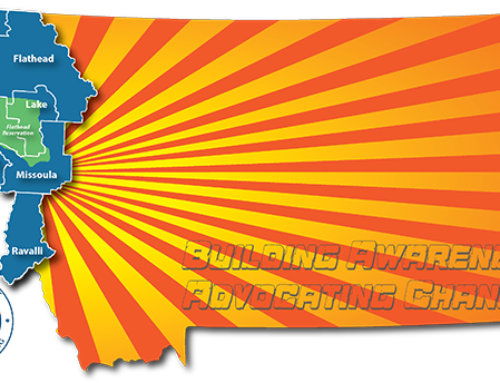Somewhere in Missoula, just off Mullen Road, on a quiet street called Shindig Lane, at the end of a little drive, sits an exceptional home.
The home isn’t uniquely colored. It’s gray and tan with maroon doors and common white gutters. It isn’t especially large, nor is it a strangely shaped. No, this little home is exceptional because anyone who visits can enter. Anyone can share dinner and chat with the family inside. And anyone, when they are full on cookies and drink and need a break from chit-chat, can use the bathroom. People can do this, at this exceptional little home, because it is Visitable.
It is one of two homes that Habitat for Humanity of Missoula has built this year. Both are Visitable, which means they have a zero-step entry, 32-inch wide doorways and a bathroom on the main floor that someone in a wheelchair could use. In short, it’s a home that everyone is welcome in.
After building an accessible home for a family last year, Missoula’s Habitat for Humanity chapter started speaking with Summit’s housing advocate Darren Larson about building all homes with basic access. Larson has cerebral palsy and uses a wheelchair to get around. He told them about growing up in Eureka and not being able to visit certain friends or go to their birthday parties because of inaccessible homes. He also told them about the statewide Montana Housing Task Force that is working toward expanding affordable/accessible housing. That conversation led to Habitat for Humanity examining how to make future homes Visitable.
“Our site supervisor saw how simple the changes were, but how important they were for the future,” said Habitat for Humanity of Missoula’s Executive Director Frankie Olson. “Little changes were easy to make in our building and so we implemented them and we’re going to do them for all future homes.”
See, making a home Visitable is pretty easy and cheap—as long as you do it while the house is first being built. Trying to make a home Visitable after it already has steps, small doorways and a tiny bathroom is much trickier. And more expensive.
A Visitable home isn’t just useful for someone who currently has mobility difficulties–it’s for anyone. Anyone who wants to have friends and relatives over for the holidays, including ones with wheelchairs and walkers and canes. Anyone who wants to stay in their home as they age and gradually become less able to climb flights of stairs to get in or around their home. Anyone who is planning to sell their home to someone who does plan to retire in it, keeping in mind that most people stay in a home for an average of seven years while most new homes are built to last eighty. And such a home is useful to anyone who wants to have big furniture. It’s a lot easier to move a couch up a soft incline and through a 32-inch doorway than it is to haul it up steps and try to angle it through a 28-inch wide opening.
Like the exceptional home on Shindig, where a family will be able to have friends and family over for the holidays regardless of their level of mobility, another Visitable home will be built in Missoula by Habitat for Humanity next year. And, hopefully, more homes the year after that. And the year after that. Because, like Olsen said, “It’s important for everyone to have access. You never know what happens in the future or what kind of friends you’ll meet. Having everyone be able to be welcome in your home is wonderful.”
To find out more about Habitat for Humanity of Missoula, please visit: http://www.habitatmsla.com/
by Darren Larson and Justyn Field





Connect With Us